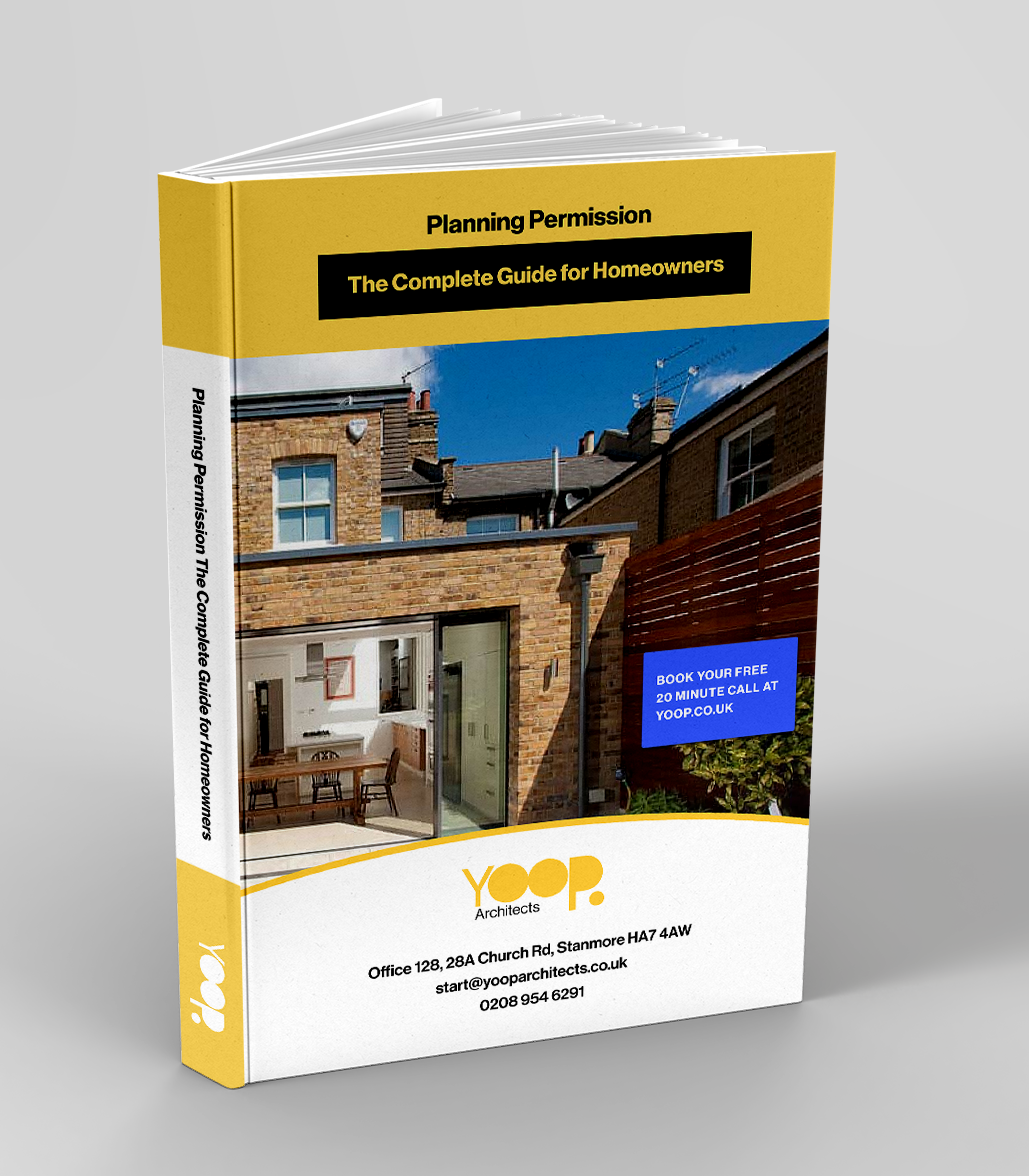
Rules on extensions to houses
Breathe new life into your home with an extension! But before the bricks and mortar fly. It’s crucial to understand the legalities. This guide unravels the rules on extensions house in the UK. We’ll explore permitted development rights. Along with planning permission requirements, size limitations, and considerations for various extension types. For example, like side, rear, and single-storey additions. Ensure your dream extension becomes a reality, all while adhering to the necessary guidelines!
A Beginner’s Guide for Rules on Extension Your Home
Extending a home is a great way to add extra space to your home without having to move. But can seem a bit daunting when you first start looking into it! So much new terminology and things to consider outside of what you want your dream extension to look like.
Yoop Architects will submit and manage any planning approvals/regulations/agreements on your behalf. Additionally, chase them up until we get the OK so you don’t have to worry about them. However, if you’d like to know more about what’s involved, read on…

Yoop Architects will submit and manage any planning approvals/regulations/agreements on your behalf and chase them up until we get the OK so you don’t have to worry about them
- Yoop Architects TWEET THIS
Planning Permission
Planning permission may not be required for your extension. If the changes you are making are within the rules on extensions of permitted development. If you’re not covered by permitted development (see below). Then you can apply for planning permission via planningportal.co.uk or through your local authority. An application in England for an extension currently costs £206.
Small Changes, Big Benefits (Extending a Home)
Permitted development means that as long as your house is quite original and unmodified. Then you’re allowed to do various changes to your house without planning permission.
Navigating Permitted Development
If the work that you’re planning is quite minor. Then you don’t need to inform anyone – you can just start building. However, we don’t recommend this and there are a few reasons why you should still submit an application. A Certificate of Lawfulness (what you will receive when you submit an application for permitted development) currently costs £103.
Permitted Development That Requires Prior Approval
Rules on extensions for major extension work, such as larger single-storey rear extensions or additional storeys may still be covered by permitted development rights but the extension work is subject to approval. Your Local Planning Authority will need to be informed of the proposed work via a ‘Prior Approval’ application and your extension is subject to the Neighbour Consultation Scheme.
What is covered by permitted development?
Single Storey
- The extension must be at the rear of the property – if the extension involves building out towards a main road, you may require planning permission
- Single storey rear extension can be built up to eight metres* depth from the original rear of the house if it’s a detached property or up to six metres* for any other house
(Larger single-storey rear extensions are subject to the Neighbour Consultation Scheme. This means that for a single-storey rear extension between 4-8 metres for a detached house or 3-6 metres for a semi-detached/terraced house, your Local Planning Authority will need to be informed of the proposed work via a ‘Prior Approval’ application and your extension is subject to approval) - Single storey rear extensions cannot exceed a height of four metres under rules on extensions.
- No more than half the area of land around the original house can be covered by extensions or other builds. This includes sheds and other outbuildings
- Materials must be in-keeping with your property’s current appearance, unless you’re building a conservatory
Multiple Storey
- Multiple storey rear extensions can be built up to three meters from the original rear of the house (same for attached/detached properties)
- You can achieve a double storey rear extension of up to three meters on the ground floor and three meters on the first floor, but all of the extensions need to be at least two meters away from each boundary
- The eaves (the part of a roof that meets or overhangs the walls of a building) and ridge height of the extension can’t be higher than the existing house
- Two-storey extensions have to be a minimum of seven metres away from the rear boundary
- The roof pitch (angle) must match the existing house, or be as close as possible
Side Extension
- Similarly according to rules on extensions, single storey, side extensions cannot exceed a height of four metres and mustn’t have a width of more than half that of the original house.
Inside this easy to read free guide, we will teach you the key things you need to know about planning permission.
Loft Conversion
Generally, Room Loft Conversions, Dormer Loft Extensions and Hip to Gable Roof Extensions can be achieved under rules on extensions permitted development as long as the extension complies with the following limits and conditions:
- A volume allowance of 40 cubic metres additional roof space for terraced houses
- A volume allowance of 50 cubic metres additional roof space for detached and semi-detached houses
- No extension beyond the plane of the existing roof slope of the principal elevation that fronts the highway
- No extension to be higher than the highest part of the roof
- Materials to be similar in appearance to the existing house
- The roof enlargement cannot overhang the outer face of the wall of the original house
(Source – planningportal.co.uk)
Garage/Basement Conversion
Converting an existing basement/garage into a usable living space does not require planning permission and will be covered by permitted development (unless your home is in a conservation area or is a listed building)
Building Regulations Approval
The Building Regulations are minimum standards for design, construction and alterations to virtually every building to ensure the safety and health for people in or about those buildings.
All extension work requires building regulations approval and you may need building regulations approval for many alteration projects. However, you do not need to get approval yourself if you use someone registered with a competent person scheme.
Shared Drains
If you’ve got a shared waste pipe running across the back of your garden and you’re going to build over it or within three meters proximity, you’ll need to submit a Build Over Agreement to the Water Authority. A Build Over Agreement costs £335 pounds with Thames Water.
Shared Walls
If your extension involves building or digging foundations within 3m of a party (shared) wall or other foundations, the work will require you to comply with the Party Wall Act. A Party Wall Award (Agreement) will protect you and your neighbour if anything goes wrong.
Now that you know more about the rules on extensions and regulations of building an extension, your next step would be to speak to an architect who can help you source and liaise with a local planner. Go ahead and book a free call below with Yoop.
FREE EXPERT HELP TODAY
Thinking of your dream home improvement or how to start your project?
Need your planning questions answered? Talk to an expert today.
Book a FREE 20 Minute Call with one of our home improvement Architects.


